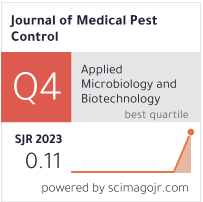Analysis of epidemiological characteristics of males sexually infected with HIV in Qinghai Province from 2010 to 2020
Abstract
Objective: To analyze the epidemiological characteristics and trends of males sexually infected with HIV in Qinghai Province over the decade from 2010 to 2020, aiming to inform targeted prevention and control strategies.
Methods: A retrospective descriptive study was conducted using HIV surveillance data of male cases reported in Qinghai Province between 2010 and 2020. Data on age, occupation, marital status, infection routes, and geographic distribution were analyzed to identify patterns and changes over time.
Results: The majority of HIV infections among males were attributed to sexual transmission, with an increasing trend observed throughout the study period. The most affected age group was 25–44 years. Urban areas reported higher case numbers compared to rural regions. A significant proportion of cases involved unmarried or divorced individuals. Behavioral risk factors and low awareness were identified as major contributors.
Conclusion: Sexual transmission remains the predominant route of HIV infection among males in Qinghai Province. Targeted health education, behavior interventions, and expanded testing are essential to curb the spread of HIV in this population.
Full text:
PDFReferences
Ma H., Dong S., Li J., Sun Y., Kuang J., Liang D.



